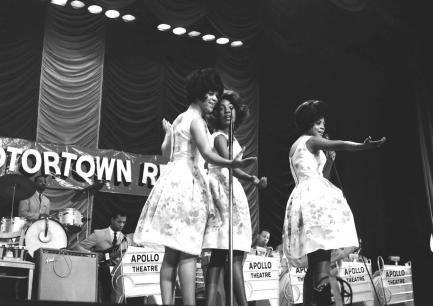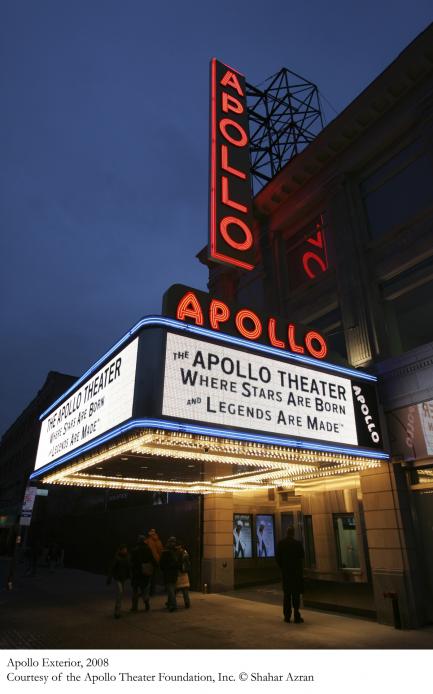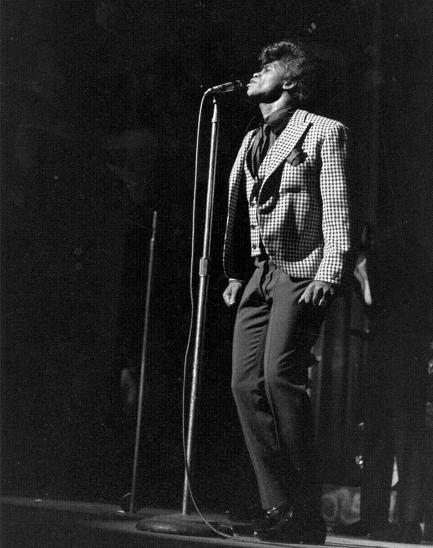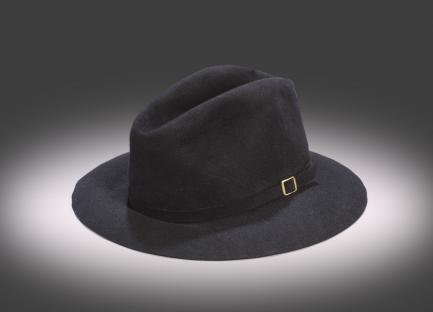National Museum of African American History and Culture Launches Landmark Exhibition Celebrating the Apollo Theater
The first exhibition to explore the Apollo Theater’s seminal impact on American entertainment premieres April 23 and continues through Aug. 29. Presented by the Smithsonian’s National Museum of African American History and Culture in collaboration with the Apollo Theater Foundation, “Ain’t Nothing Like the Real Thing: How the Apollo Theater Shaped American Entertainment” examines the rich history and cultural significance of the legendary Harlem theater, tracing the story from its origins as a segregated burlesque hall to its starring role at the epicenter of African American entertainment and American popular culture. The opening of the exhibition marks the 75th anniversary of the Apollo Theater.
Presented in the NMAAHC Gallery in the National Museum of American History, “Ain’t Nothing Like the Real Thing” is one of several touring exhibitions presented by the museum in major cities across the country. The exhibition will travel to Detroit’s Charles H. Wright Museum of African American History (Oct. 1 – Jan. 2, 2011) and the Museum of the City of New York (Jan. 20, 2011 – May 1, 2011). The exhibition tour will be organized by the Smithsonian Institution Traveling Exhibition Service (SITES).
“As a beacon of possibility and excellence, the Apollo is a perfect lens through which the museum can examine many of the country’s most important political, social and cultural developments,” said Lonnie G. Bunch III, founding director of NMAAHC. “The story of the Apollo yields incredible insight into the flux of African American life in the 20th century—from the great migration to the urban north, through two world wars and into the civil rights movement.”
“Since 1934, the Apollo has been a driving force in shaping America’s musical and cultural landscape,” says Jonelle Procope, president and CEO of the Apollo Theater. “The Apollo has nurtured generations of artists and has been a source of entertainment and inspiration to millions of people throughout its 75 years. We are delighted to be partnering with the Smithsonian’s National Museum of African American History and Culture to present ‘Ain’t Nothing Like the Real Thing,’ which will illuminate the role the Apollo has played in the creative life of our nation.”
Exhibition co-curators Tuliza Fleming of the museum and Guthrie Ramsey Jr., the Edmund J. and Louise W. Kahn Term Professor of Music at the University of Pennsylvania, have assembled historic and contemporary costumes, playbills, music scores, graphic images and recorded music to document Apollo’s history, including memorable performances by the emerging artists and living legends who graced its stage. Moving chronologically through the theater’s development, exhibition panels provide context to the featured objects and are enhanced by an introductory film and video alcoves, which offer a multimedia experience for visitors. Among the one-of-a-kind and rarely displayed artifacts in the exhibition are:
-
James Brown’s cape and jumpsuit—Brown was an Apollo regular even after he reached superstar status.
-
Michael Jackson’s fedora—Jackson won Amateur Night in 1967 with the Jackson 5.
-
The Supremes’ dresses—The original trio first played the Apollo in 1962 as part of the dazzling Motown Revue.
-
Cab Calloway’s baton—Calloway was one of the most popular swing era band leaders.
-
Sammy Davis’ childhood tap shoes—Davis first appeared on the Apollo stage in 1947.
-
Peg Leg Bates’ peg leg—Despite losing his left leg in an accident at age 12, Bates pursued his dream of tap dancing. By the mid-1930s, he was an Apollo regular.
-
Duke Ellington’s score for Black and Tan Fantasy (1927)—The legendary jazz composer and bandleader wrote some of the best-known compositions in American music.
-
Ella Fitzgerald’s dress—Fitzgerald made her Amateur Night debut at the age of 17.
-
Miles Davis’ flugelhorn—Davis frequently headlined at the Apollo.
-
LL Cool J’s jacket and hat—LL Cool J remains one of today’s best-known rappers.
-
Celia Cruz’s dress—Known as the Queen of Salsa, Cruz was a symbol of Afro-Cuban music throughout the African diaspora.
Fleur Paysour
202-633-4761







